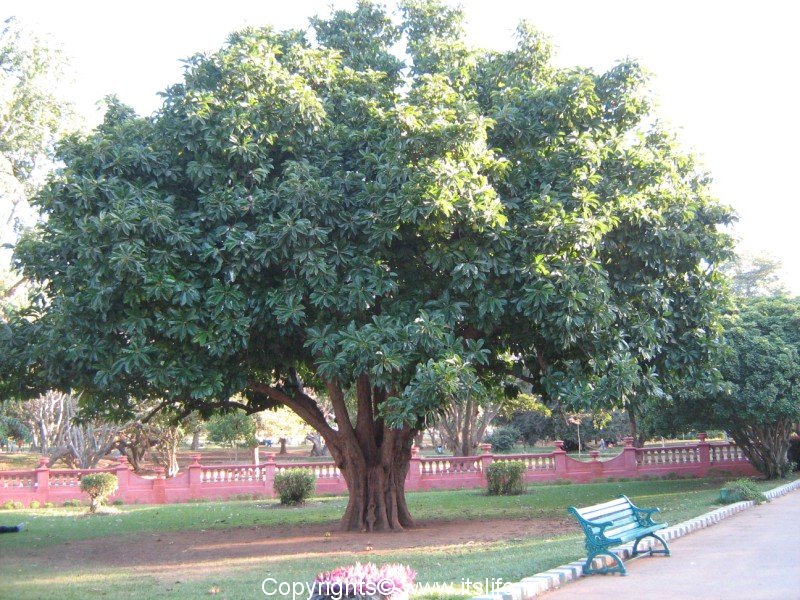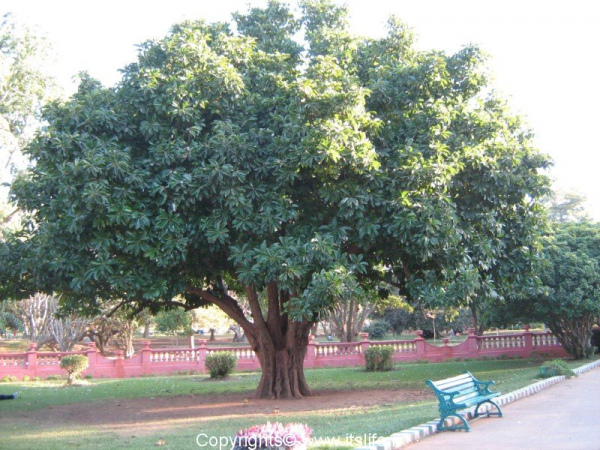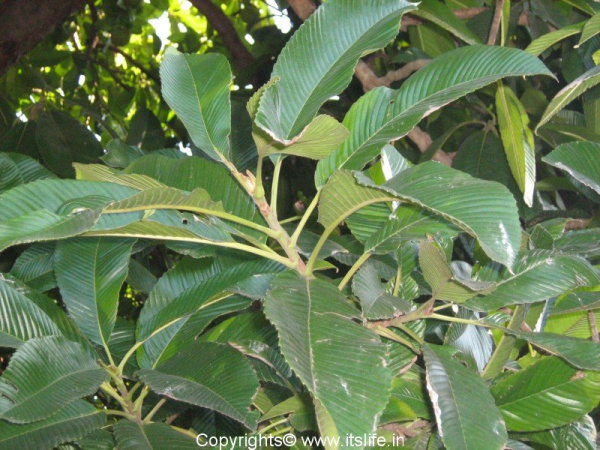I came across this tree in Lalbagh botanical gardens, Bengaluru.
The other common names of Elephant Apple tree are Indian catmon, Hondapara Tree, Ma-tad. In Kannada it is known as Kaltega, Mucchilu, Ganagalu, in Hind it is known as Chalta, Karambel, in Sanskrit it is known as Avartaki. The Botanical name is Dillenia indica and belongs to Dilleniaceae (Karmal) family.
Elephant Apple Tree is a native of Southeast Asia including India, Sri Lanka, Southwestern China, Vietnam, Thailand, Malaysia, and Indonesia. In India, Elephant Apple Tree grows abundantly in Northeast Indian forests.
This is an evergreen tree that can grow to a height of 15 meters. The leaves are green, large around 15-36 cm long, with a ridged surface and impressed veins. The edges are toothed and when crushed, they have a lemony fragrance.
Elephant Apple Tree flowers are large, up to 5 inches across, with five white petals and yellowish-green sepals. Flowers have numerous yellow stamens. They bloom in singles at the end of the branch, facing downwards.
The sepals are rounded and yellowish green.
The fruit is again large, edible, sour, yellowish green around 5-12 cm diameter and a collection of 15 carpels, each carpel contains five seeds embedded in an edible pulp. The fruits are a favourite of the Asian Elephants and hence the name “Elephant Apple”. The fruit is also consumed by other wildlife like monkeys, langurs, and deer. The tree also attracts several birds and bees.
Uses:
Elephant Apple trees are planted in gardens across the country. The fruit pulp is used in Indian cuisine in curries, jam, chutneys, pickles, and jellies. All parts of this plant are used in traditional medicine to treat various ailments.
Propagation:
Elephant Apple tree is propagated using seeds or cuttings. Plant in full sun in well-drained acidic soil.




